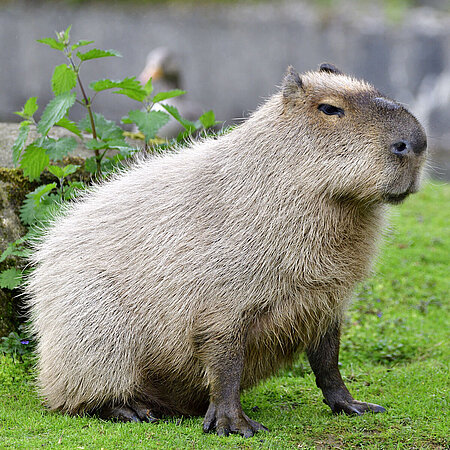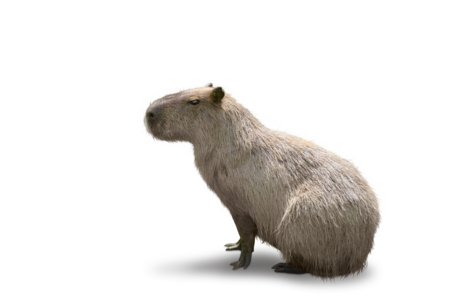Capybara
Hydrochoerus hydrochaeris

- Family
- Guinea pigs (Caviidae)
- Weight
- 35 – 65 kg
- Habitat
- Grass savannahs, bush steppes and forests near waters
Recyclable droppings
The name capybara is derived from the Guaraní tribe word “kapiyva”, meaning “master of the grasses”. The world’s largest living rodent loves eating grass, but finds it hard to digest the cellulose content. To help facilitate the digestion process the capybara eats its own droppings, which contain bacterial gut flora.

Excellent swimmer
Capybaras have webbed feet and can stay underwater, completely submerged, for up to five minutes. When swimming, only the nostrils, eyes and ears are visible – similar to a crocodile. At signs of danger from predators such as jaguars or pumas, capybaras flee into the water where they have a better chance of escape than on land.
Basis of life
To make it difficult for predators to track their movements, capybaras release their urine and droppings predominantly in the water.
Distribution
